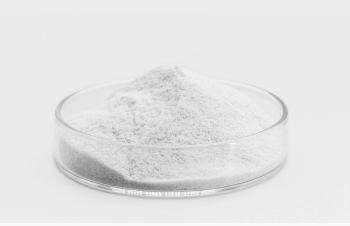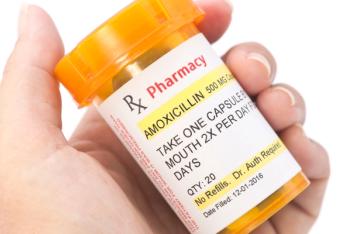
- Pharmaceutical Technology-09-02-2006
- Volume 30
- Issue 9
Contract Manufacturing Organizations Expand in High-Potency Manufacturing
Potent-compound awareness training for operators is important to understand why the containment and controls are in place.
A growing number of pharmaceuticals contain highly potent active ingredients, and select custom manufacturers are responding by expanding their capabilities.
High-potency active ingredients (HPAIs) are classified based on their inherent characteristics of toxicity and pharmacological potency as well as on their occupational exposure limits (OELs). Typically, active pharmaceutical ingredients (APIs) with OELs at or below 10 micrograms per cubic meter of air as an eight-hour time-weighted average are considered potent from an occupational health perspective, explains John Farris, president and CEO, SafeBridge Consultants, Inc. (Mountain View, CA,
A cytotoxic suite at NPIL Pharma's high-potency manufacturing facility in Grangemouth, Scotland.
High-potency manufacturing may be generally categorized based on four levels of OELs (see Table I). The four categories range from Category I, low-potency compounds requiring conventional good manufacturing practices (GMPs), to Category IV, for which a high degree of containment is required.
Contract manufacturers expand
SAFC (St. Louis, MO,
The expansion was driven by an increase in demand for custom chemical manufacturing services for HPAIs, including Category III and Category IV compounds.
The expansion adds new analytical laboratories, expanded research and development laboratories, three new kilo laboratories, a hydrogenation suite, a CGMP drying suite, and increased warehousing and storage capacity. The Madison site was the former principal manuufacturing site of Tetronics, which SAFC acquired in 2004.
Table I: Potency classification scheme (generic).
SAFC's Madison site was founded on the company's expertise in vitamin D chemistry for the scale-up and manufacture of difficult-to-synthesize vitamin D analogs. SAFC manufactures paricalcitol, the active ingredient in Abbott Laboratories' (Abbott Park, IL.
Ferro Pfanstiehl Laboratories, Inc. a subsidiary of Ferro Corporation (Cleveland, Ohio,
Ferro Pfanstiehl Laboratories' Class IV 100-L glass-lined kilo laboratoryâisolator system is designed to produce developmental high-potency pharmaceutical active ingredients.
The new kilo laboratory is the first phase of a multiphase capital building program supporting Ferro Pfanstiehl's HPAI business strategy. The company also recently completed the commissioning of a new CGMP supercritical fluid-based–particle-size engineering (SCF–PSE) pilot facility to provide regulated capabilities and expertise in particle sizing, purification, and formulation applications for client-sponsored preclinical and clinical studies. The new pilot laboratory is capable of handling both high-potency and and nonhigh potency SCF–PSE applications.
Ferro Pfanstiehl began its strategic capital spending program, inclusive of its HPAI strategy, by commissioning a 21 CFR Part 11-compliant analytical services laboratory in April 2004.
A key project in Ferro Pfanstiehl's HPAI program is the full development and commercial production of the HPAI decitabine. Decitabine is the active ingredient in MGI Pharma, Inc.'s (Bloomington, MN,
Decitabine is Ferro Pfanstiehl's first client-sponsored high-potency NCE to gain FDA approval. The company, however, has more than 20 drug master files covering its existing HPAI, API, and high-purity low-endotoxin excipient-based products.
The project for decitabine is significant for Ferro as MGI Pharma expands the commercial potential of the drug. MGI Pharma recently signed a licensing agreement with Jannsen-Cilag GmbH, a subsidiary of Johnson & Johnson (New Brunswick, NJ,
NPIL Pharma (Mumbai, India,
facturing of HPAIs (cytotoxics and prostaglandins) and preclinical and clinical development. The expansion includes recruitment of 16 additional technical and operational staff and a roughly $500,000 investment in containment upgrades. The hardware investment will bring more CGMP capacity for clinical trial materials on stream by the end of 2006.
The new containment upgrades to an existing GMP suite include additional high-integrity barrier isolation for the safe handling for Category IV-V toxins used for conjugation to monoclonal antibodies and targeting agents. NPIL Pharma gained the Grangemouth facility as part of its acquisition of the custom manufacturer Avecia Pharmaceuticals in December 2005.
Helsinn Advanced Synthesis SA (Biasca,
EaglePicher Pharmaceutical Services (EPPS, Lenexa, KS,
The company has a Class 100,000 high-containment facility that is designed to use barrier technology for the synthesis, compound isolation, and drying of the high-potency API. Other design features include clean-in-place systems, validated computer controls, and separate air handling (high-efficiency particulate air handling, both inbound and exhaust).
Key projects by EPPS include the manufacture of several APIS used as anticancer agents, including camptothecin, paclitaxel, doxorubicin, and daunorubicin derivatives. Other programs include nanoparticles and the manufacturing of cytotoxic agents for coupling to antibodies for targeted delivery of high-potency APIs, explains Parker. EPPS supports scale-up from preclinical to commercial supplies of the high-potency API.
New players add HPAI capabilities
Dishman Pharmaceuticals & Chemicals., Ltd. (Ahmedabad, India.
Another Indian player, Hikal, Ltd. (Mumbai, India,
Certification in manufacturing HPAIs
To address the specialized capabilities for high-potency manufacturing, SafeBridge Consultants has developed a certification program that provides a third-party assessment of a company's ability to handle and manufacture potent compounds safely. SafeBridge offers the certification process for competency in the occupational health aspects of high-potency manufacturing.
To be certified by SafeBridge, a company must meet minimum criteria in the management, evaluation, containment and control, and communication elements of potent-compound safety. Elements of the certification program include an on-site assessment of both physical plant and equipment items (such as segregation of the processing areas, containment and process technology), and program items such as process safety, training, medical surveillance, industrial hygiene, toxicology, and environmental control.
In assessing the key areas for high-potency manufacturing, SafeBridge's Farris explains that manufacturing organizations usually understand the need for process containment and focus their efforts on the "hardware" side of the matter. This focus would include implementation of exposure-control technology such as isolators (sophisticated gloveboxes), direct connection for gravity transfers using split-butterfly valves, and process technology that eliminates transfer steps such as "one pot" multiprocess dryer granulators.
The program areas most commonly in need of improvement are the evaluation and communication elements or "software" side, he explains. These elements include thorough occupational and environmental toxicology evaluation of the material before processing, industrial hygiene air-monitoring studies during processing to measure exposures, and potent-compound awareness training for operators to provide detailed instruction into why the containment and controls are in place, and not just how to use the associated equipment.
"Investments in highly contained process equipment are prudent for manufacturing these high potency materials; however, they will only work as well as the operator's technique allows," explains Farris. "To achieve high performance form the operators, they must understand how their sometimes subtle actions can influence the air concentrations of the materials they are working with and, therefore, affect their exposure to the pharmaceutical substances."
Articles in this issue
over 19 years ago
Stage Fright: The Risks and Benefits of Moving Forwardover 19 years ago
Uncertain Termsover 19 years ago
September 2006over 19 years ago
Effective Responses to Ineffective Workover 19 years ago
Who's Inspecting the Inspectors?Newsletter
Get the essential updates shaping the future of pharma manufacturing and compliance—subscribe today to Pharmaceutical Technology and never miss a breakthrough.




